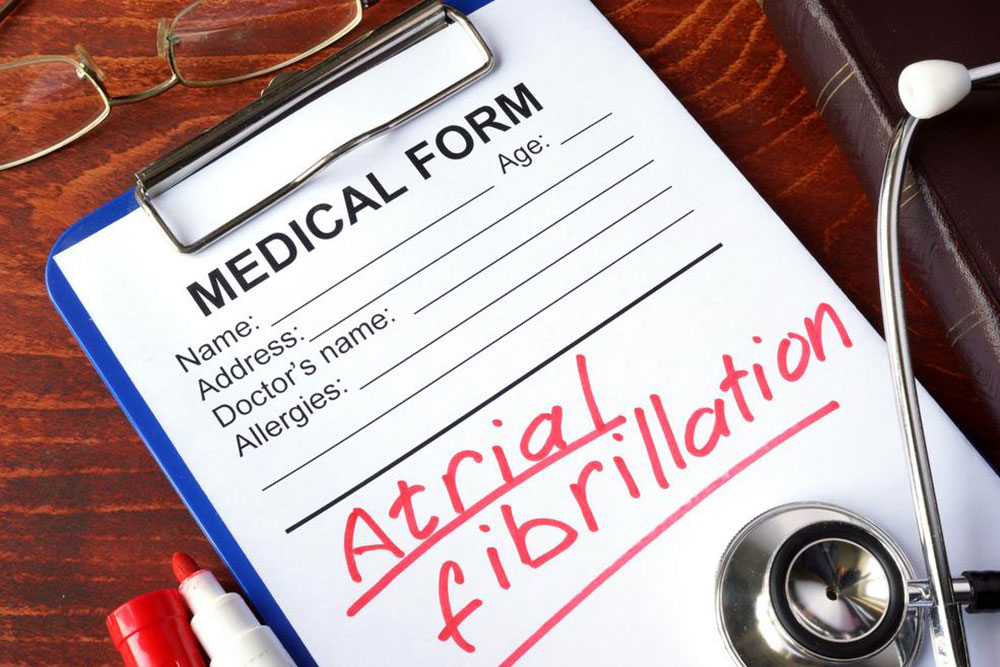Comprehensive Guide to Managing Atrial Fibrillation and Its Complications
This comprehensive guide explores advanced strategies for managing atrial fibrillation, emphasizing medication, procedural interventions, and surgical options. It aims to help patients understand treatment goals such as restoring normal heart rhythm, preventing stroke, and improving overall heart health. With tailored treatment plans, sufferers can significantly reduce complications and enhance their quality of life. Whether through lifestyle adjustments, medications, catheter ablation, or surgical procedures, effective AFib management is achievable. Always consult healthcare professionals for personalized care and follow their guidance for optimal outcomes.

Effective Strategies for Addressing Atrial Fibrillation and Its Associated Risks
Atrial fibrillation (AFib) stands as the most common and serious type of heart arrhythmia affecting millions worldwide. This condition stems from abnormal electrical signals within the heart, leading to irregular and often rapid heartbeats. In AFib, the upper chambers of the heart, known as the atria, experience chaotic electrical activity, causing them to quiver ineffectively. While some individuals with AFib may not notice symptoms, others can experience symptoms ranging from palpitations and fatigue to dizziness and shortness of breath. More importantly, AFib significantly increases the risk of severe health complications, such as stroke, heart failure, and other cardiovascular issues.
Understanding the underlying mechanisms and treatment options for atrial fibrillation is vital for patients, caregivers, and healthcare professionals to manage the condition effectively. This comprehensive guide aims to shed light on current strategies for managing AFib, including lifestyle modifications, medication options, advanced procedural interventions, and surgical options. By exploring these approaches in detail, sufferers can be better equipped to navigate their treatment journey and improve their quality of life.
Understanding Atrial Fibrillation and Its Impact
Atrial fibrillation results from disorganized electrical signals in the heart's atria, leading to ineffective contractions and irregular heart rhythms. The irregular heartbeat can cause blood to stagnate within the atria, increasing the likelihood of blood clot formation. These clots can dislodge and travel to the brain or other vital organs, leading to strokes, which are among the most severe complications associated with AFib. The risk of stroke in patients with AFib is up to five times higher compared to those without the condition.
Additionally, persistent AFib can weaken the heart over time, contributing to the development of heart failure—a condition where the heart cannot pump blood efficiently. This creates a cycle of deteriorating health, making early diagnosis and effective management critical.
Fortunately, advancements in medical science have provided multiple treatment options aimed at controlling heart rhythm, reducing stroke risk, and improving overall cardiovascular health. A multidisciplinary approach that involves medication, procedural interventions, and lifestyle changes can significantly improve patient outcomes. Each treatment strategy is tailored to the individual’s specific health profile, symptoms, and risk factors.
Goals of Treatment for Atrial Fibrillation
Effective management of atrial fibrillation revolves around three primary objectives:
Restoring and maintaining a normal heart rate (rate control)
Preventing blood clot formation to reduce stroke risk (anticoagulation therapy)
Re-establishing normal heart rhythm (rhythm control)
These goals can be achieved through a combination of medication, procedural interventions, and lifestyle adjustments depending on the severity of AFib and patient-specific factors.
Pharmacological Interventions for AFib Management
Medications play a central role in managing atrial fibrillation. They are crucial in controlling symptoms, regulating heart rate, preventing blood clots, and restoring sinus rhythm when necessary.
Blood Thinners and Stroke Prevention
Given the heightened risk of stroke associated with AFib, anticoagulant medications are often prescribed to prevent clot formation. The most commonly used anticoagulants include:
Rivaroxaban: An oral Factor Xa inhibitor that effectively reduces stroke risk without the need for regular blood monitoring
Warfarin: A traditional anticoagulant requiring consistent blood tests to adjust dosage and monitor INR levels
Edoxaban: Another Factor Xa inhibitor with a favorable bleeding profile
Apixaban: Used to decrease stroke risk with fewer dietary restrictions and less frequent blood tests
Dabigatran: A direct thrombin inhibitor offering an alternative to warfarin
Patients on anticoagulants need regular check-ups to monitor blood clotting parameters, ensuring therapy remains effective and safe.
Controlling Heart Rate
Slowing the heart rate helps alleviate symptoms and reduce the strain on the heart. Common medications include:
Calcium channel blockers like verapamil and diltiazem, which relax blood vessels and reduce heart rate
Beta blockers such as propranolol, carvedilol, and atenolol, which block adrenaline effects and slow the heart
Digoxin: An older medication that helps control heart rate, especially during physical activity or stress
These drugs are typically prescribed based on patient tolerance, underlying health conditions, and specific symptom profiles.
Restoring Normal Heart Rhythm
To re-establish normal sinus rhythm, medications that modulate electrical activity are employed:
Potassium channel blockers like amiodarone, which prolong the heart's repolarization phase
Sodium channel blockers such as quinidine and flecainide, which stabilize electrical signals
If medication is insufficient or causes adverse effects, procedural options like electrical cardioversion may be considered. This painless procedure involves delivering controlled electrical shocks to reset the heart's rhythm back to normal. Often, medications are continued afterward to maintain sinus rhythm.
Advanced Interventional Procedures
When medications do not provide adequate control, more invasive strategies are considered to manage persistent or recurrent AFib.
Catheter Ablation
One of the most effective procedures for drug-resistant AFib is catheter ablation. During this minimally invasive procedure, a thin flexible catheter is threaded through blood vessels to the heart. Using radiofrequency energy or cryotherapy, targeted tissue areas responsible for abnormal electrical signals are destroyed. This procedure aims to isolate the ectopic foci that trigger AFib episodes, restoring normal electrical conduction and rhythm. Catheter ablation boasts high success rates, especially in patients with paroxysmal AFib, and can significantly reduce the need for antiarrhythmic drugs.
Pacemaker Installation
In some cases, when AFib leads to a very slow heart rate that medication cannot regulate, implanting a pacemaker becomes necessary. A pacemaker is a small device surgically placed under the skin of the chest, providing electrical impulses to maintain an appropriate heart rate. Pacemakers are particularly useful when AFib coexists with sick sinus syndrome or significant bradycardia, ensuring the heart maintains adequate output and reducing symptoms of fatigue or dizziness.
The Maze Procedure and Surgical Interventions
For severe cases of AFib, especially those unresponsive to medication and catheter-based therapies, surgical interventions may be considered. The Maze procedure involves open-heart surgery where strategic scar tissue is created within the atria to block abnormal electrical pathways. This prevents the arrhythmia from recurring and often results in a permanent cure. The procedure is generally part of other cardiac surgeries and requires careful patient selection. In recent years, minimally invasive adaptations of the Maze procedure have also been developed to reduce recovery time and operative risks.
Always consult with your cardiologist or heart specialist to determine the most appropriate treatment plan tailored to your condition. It's essential to follow medical advice, participate in ongoing monitoring, and maintain a healthy lifestyle to control AFib effectively. Avoid self-medicating and seek expert guidance for all procedures and medication adjustments.





